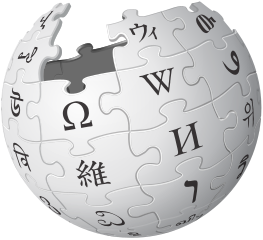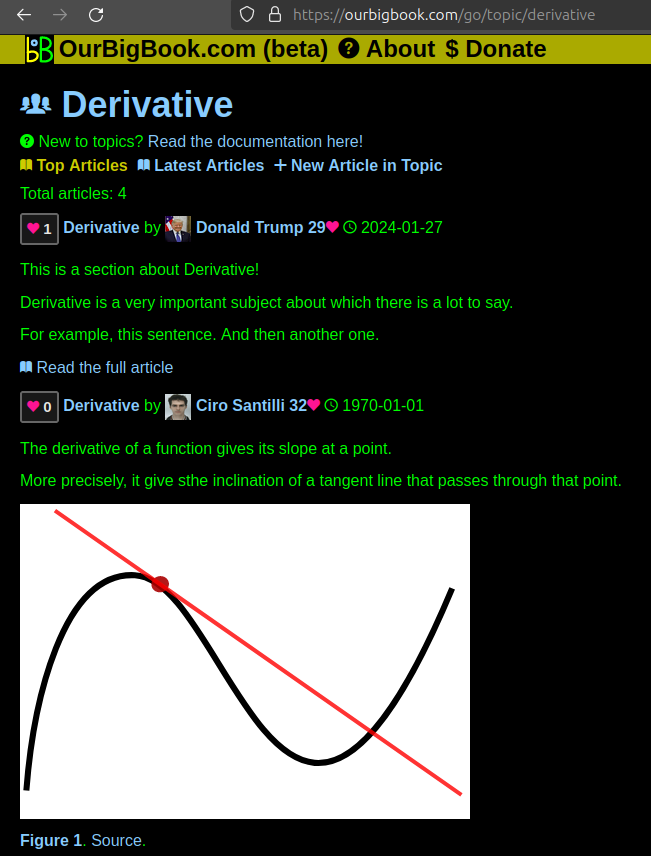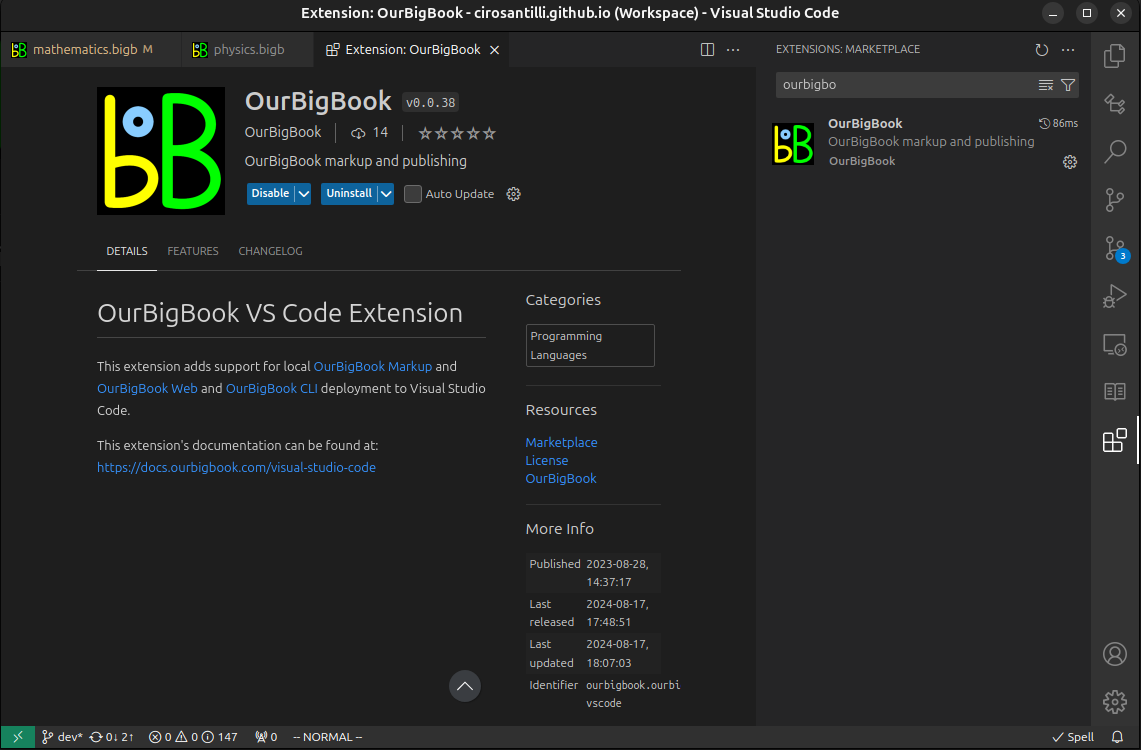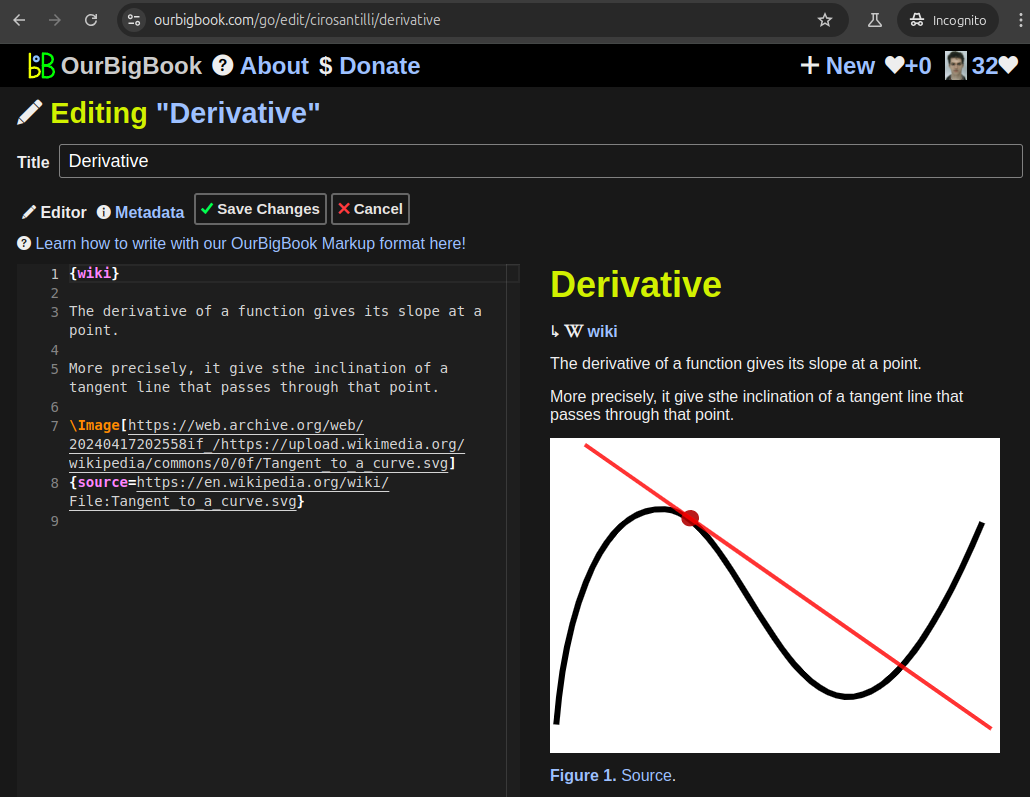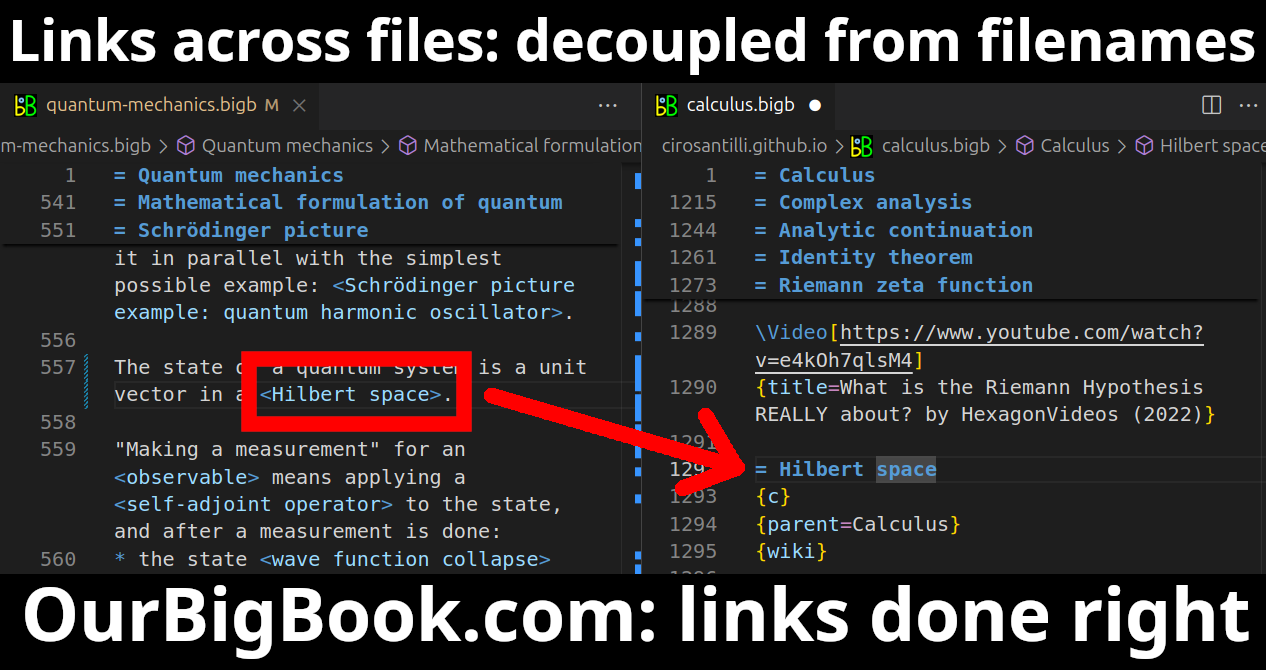The term "Curves" can refer to different concepts depending on the context in which it's used. Here are some of the common interpretations: 1. **Mathematics**: In mathematics, a curve is a continuous and smooth flowing line without sharp angles. Curves can be defined in different dimensions and can represent various functions or relationships in geometry and calculus. 2. **Statistics and Data Analysis**: In statistics, curves can represent distributions, trends, or relationships between variables.
Smooth manifolds are a fundamental concept in differential geometry and provide a framework for studying shapes and spaces that can be modeled in a way similar to Euclidean spaces. Here’s a more detailed explanation: ### Definition A **smooth manifold** is a topological manifold equipped with a global smooth structure.
In differential geometry, theorems are statements that have been proven to be true based on definitions, axioms, and previously established theorems within the field. Differential geometry itself is the study of curves, surfaces, and more generally, smooth manifolds using the techniques of differential calculus and linear algebra. It combines elements of geometry, calculus, and algebra.
A \((G, X)\)-manifold is a mathematical structure that arises in the context of differential geometry and group theory. In particular, it generalizes the notion of manifolds by introducing a group action on a manifold in a structured way. Here’s a breakdown of the components: 1. **Manifold \(X\)**: This is a topological space that locally resembles Euclidean space and allows for the definition of concepts such as continuity, differentiability, and integration.
Affine differential geometry is a branch of mathematics that studies the properties and structures of affine manifolds, which are manifolds equipped with an affine connection. Unlike Riemannian geometry, which relies on the notion of a metric to define geometric properties like lengths and angles, affine differential geometry primarily focuses on the properties that are invariant under affine transformations, such as parallel transport and affine curvature.
Analytic torsion is a concept in mathematical analysis, particularly in the fields of differential geometry and topology, relating to the behavior of certain types of Riemannian manifolds. It arises in the context of studying the spectral properties of differential operators, especially the Laplace operator.
A developable surface is a type of surface in geometry that can be flattened into a two-dimensional plane without distortion. This means that the surface can be "unfolded" or "rolled out" in such a way that there is no stretching, tearing, or compressing involved. Developable surfaces include shapes like: 1. **Planes**: Flat surfaces are obviously developable as they are already two-dimensional.
Cartan's equivalence method is a powerful mathematical framework developed by the French mathematician Henri Cartan in the early 20th century. It is primarily used in the field of differential geometry and the theory of differential equations, particularly for understanding the equivalence of geometric structures and their associated systems of differential equations.
Clairaut's relation, also known as Clairaut's theorem, is a fundamental result in differential geometry that relates the curvature of a surface to the derivatives of the surface's height function. Specifically, it applies to surfaces of revolution, which are surfaces generated by rotating a curve about an axis.
Clifford analysis is a branch of mathematical analysis that extends classical complex analysis to higher-dimensional spaces using the framework of Clifford algebras. It focuses on functions that operate in spaces equipped with a geometric structure defined by Clifford algebras, which generalize the concept of complex numbers to higher dimensions. In Clifford analysis, the primary objects of interest are functions that are defined on domains in Euclidean spaces and take values in a Clifford algebra.
A **closed geodesic** is a type of curve on a manifold that has several important properties in differential geometry and topology. Here are the key characteristics: 1. **Geodesic**: A geodesic is a curve that locally minimizes distance and is a generalization of the concept of a "straight line" to curved spaces. It can be defined as a curve whose tangent vector is parallel transported along the curve itself.
A **closed manifold** is a type of manifold that is both compact and without boundary. More specifically, a manifold \( M \) is called closed if it satisfies the following conditions: 1. **Compact**: This means that the manifold is a bounded space that is also complete, meaning that every open cover of the manifold has a finite subcover. In simple terms, a compact manifold is one that is "finite" in a sense and can be covered by a finite number of open sets.
A **differential invariant** is a property or quantity in differential geometry that remains unchanged under particular types of transformations, usually involving differentiable functions or mappings. These invariants play a crucial role in studying geometric objects and their properties without being affected by the coordinate system or parameterization used to describe them.
Dynamic fluid film equations are mathematical formulations that describe the behavior of thin films of fluid that flow under the influence of various forces, such as gravity, surface tension, and viscous forces. These equations are crucial in understanding phenomena in various fields, including materials science, engineering, and fluid dynamics. In general, a fluid film can be considered a thin layer of fluid with a small thickness compared to its lateral dimensions.
In differential geometry, the concept of the Laplace operator, often denoted as \(\Delta\) or \(\nabla^2\), is a generalization of the Laplacian from classical analysis to manifolds. It plays a significant role in understanding the geometric and analytical properties of functions defined on a manifold.
"Discoveries" by Josep Comas Solà is not a widely known work or publication, so it may not have significant recognition in mainstream literature or academic contexts.
A **G-fibration** is a concept in the field of algebraic topology, particularly in relation to homotopy theory and the study of fiber spaces. It is a generalization of the notion of a fibration, and it is typically associated with certain kinds of structured spaces and diagrams. In a broad sense, a G-fibration is a fibration where the fibers are not just sets but are equipped with a group action, typically from a topological group \( G \).
In differential geometry, a \( G \)-structure on a manifold is a mathematical framework that generalizes the structure of a manifold by introducing additional geometric or algebraic properties. More specifically, a \( G \)-structure allows you to define a way to "view" or "furnish" the manifold with additional structure that can be treated similarly to how one treats vector spaces or tangent spaces.
General covariance is a principle from the field of theoretical physics and mathematics, particularly in the context of general relativity and differential geometry. It refers to the idea that the laws of physics should take the same form regardless of the coordinate system used to describe them. In other words, the equations that govern physical phenomena should be invariant under arbitrary smooth transformations of the coordinates.
The Gibbons–Hawking ansatz is a concept in theoretical physics, particularly in the study of gravitational instantons, which are solutions to the classical equations of general relativity. Named after the physicists Gary Gibbons and Stephen Hawking, the ansatz constructs a specific form of metric that is useful for exploring the properties of four-dimensional manifolds, especially in the context of quantum gravity and the study of black hole thermodynamics.
Pinned article: Introduction to the OurBigBook Project
Welcome to the OurBigBook Project! Our goal is to create the perfect publishing platform for STEM subjects, and get university-level students to write the best free STEM tutorials ever.
Everyone is welcome to create an account and play with the site: ourbigbook.com/go/register. We belive that students themselves can write amazing tutorials, but teachers are welcome too. You can write about anything you want, it doesn't have to be STEM or even educational. Silly test content is very welcome and you won't be penalized in any way. Just keep it legal!
Intro to OurBigBook
. Source. We have two killer features:
- topics: topics group articles by different users with the same title, e.g. here is the topic for the "Fundamental Theorem of Calculus" ourbigbook.com/go/topic/fundamental-theorem-of-calculusArticles of different users are sorted by upvote within each article page. This feature is a bit like:
- a Wikipedia where each user can have their own version of each article
- a Q&A website like Stack Overflow, where multiple people can give their views on a given topic, and the best ones are sorted by upvote. Except you don't need to wait for someone to ask first, and any topic goes, no matter how narrow or broad
This feature makes it possible for readers to find better explanations of any topic created by other writers. And it allows writers to create an explanation in a place that readers might actually find it.Figure 1. Screenshot of the "Derivative" topic page. View it live at: ourbigbook.com/go/topic/derivativeVideo 2. OurBigBook Web topics demo. Source. - local editing: you can store all your personal knowledge base content locally in a plaintext markup format that can be edited locally and published either:This way you can be sure that even if OurBigBook.com were to go down one day (which we have no plans to do as it is quite cheap to host!), your content will still be perfectly readable as a static site.
- to OurBigBook.com to get awesome multi-user features like topics and likes
- as HTML files to a static website, which you can host yourself for free on many external providers like GitHub Pages, and remain in full control
Figure 3. Visual Studio Code extension installation.Figure 4. Visual Studio Code extension tree navigation.Figure 5. Web editor. You can also edit articles on the Web editor without installing anything locally.Video 3. Edit locally and publish demo. Source. This shows editing OurBigBook Markup and publishing it using the Visual Studio Code extension.Video 4. OurBigBook Visual Studio Code extension editing and navigation demo. Source. - Infinitely deep tables of contents:
All our software is open source and hosted at: github.com/ourbigbook/ourbigbook
Further documentation can be found at: docs.ourbigbook.com
Feel free to reach our to us for any help or suggestions: docs.ourbigbook.com/#contact
